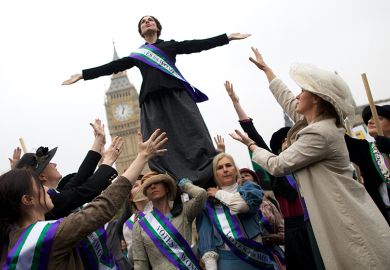Kafka's work, as Elizabeth Boa readily admits, is elusive, for it is pervaded by ambiguity which arises from its continuously moving on two levels, the one realistic or naturalistic, the other imaginary or absurd. Both are inextricably interfused. Any attempt to elicit a meaning runs sooner or later into difficulties. It is almost impossible to avoid the pitfall of allegorising persons and events which defy explanation. There appears to be no key to his work; a multiplicity of interpretations appears to be called for to do justice to his anguished but unsuccessful quest for spiritual certainty which he felt compelled to record, though he was never really satisfied with his writing; it was for him mere "scribbling". Yet writing alone seemed to offer a glimpse of hope, for it could be a "form of prayer", as he called it, even if there was no way of finding answers to his questioning within the confines of language, a medium that was magical and treacherous alike.
Boa seeks to interpret his work in terms of the politics of gender, race and class. She directs her main thrust to uncovering the power relations between men and women in a bourgeois world. Fortunately she is well versed in Kafka criticism. Less fortunately, however, she encumbers her explorations with heavy luggage. Apparently enthralled by recent fashions in literary criticism, she uses terms such as "Kafka's subjectivity", "subtextual", or "narratee". Central to her argument is the idea of "patriarchism" which is derived from "feminist political theory", and not from Sir Robert Filmer's Patriarcha, so ably criticised by Locke in his Two Treatises on Government, whom she rather infelicitously calls the "earliest ideologue of bourgeois society". She also indulges in flights of fancy which I, a sceptic in these matters, am unable to follow. For instance, when drawing a parallel to Thomas Mann's Buddenbrooks she believes that Thomas Buddenbrook, when struck down by a brain haemorrhage, "suffers a concentrated cerebral orgasm which then lays him down prone and climaxes in an effusion of blood through facial orifices", and she goes on to say that "the naturalist medical precision in the story" is accompanied by "a subtextual unveiling of theI Patriarch as the tabooed forbidden triumphs over the sacred phallus". She also believes that in The Penal Colony Kafka demolishes Kant's aesthetics, an untenable view since the issue does not arise.
These eccentricities of thought, however irritating, should not deter a reader from profiting from her thoughtful analysis of some of Kafka's works, for although she tends to spice her interpretations with extravagant sexual connotations and imagery, she has quite a few interesting comments to make. She writes perceptively about Kafka's letters to his fiancee Felice Bauer and his lover Milena Jesensk . Kafka's contradictory emotions about them are well brought out: he wanted to have Felice without any of the trappings of her bourgeois family background from which she was unable and unwilling to escape. Kafka's love affair with Milena was, in the main, carried on by correspondence which served as a defence to protect his writing. In both cases his commitment to his task as a writer destroyed the relationship which had brought the lovers far more torment than joy. Of course, the tribulations were not always due to Kafka's own inner turmoil; his affair with Milena was also undermined by her refusal to leave her husband and his unwillingness to accept the triangular situation. Admittedly, Kafka did not have a relaxed attitude to women; disgust with his body and sex frequently surface.
In The Trial, the decay of law, the conflicts of class, race, and generational fears, Boa maintains, merge into sexual anxiety. Social divisions and economic problems indeed play a role in that novel, race less so, though it is implicit in much of Kafka's writings. The function of women in this work and his other great novel, The Castle, is carefully and often, though not always persuasively examined. While The Trial, in her view, is basically a sombre work, The Castle reveals a "mellower mood". It is situated in the borderland between comedy and farce which itself gives rise to despair, but K, the hero, finds some measure of accommodation and, if the information provided by Max Brod, Kafka's friend and first editor of this posthumously published fragmentary novel, is to be believed (Brod's account is uncorroborated and open to doubt), he was to die merely exhausted, not as cruel an end as Josef K's execution in The Trial. Boa's account of The Castle rightly ends on a warning note; for we are reminded that we cannot be sure of its import: "Its anatomy of patriarchy uncovers endless contradictions: there may be accommodation, but scarcely affirmation, and a subterranean humour makes the scandal of patriarchy ludicrous. Although the humour offers no programmatic exit, it is a kind of rebellion." Whether this interpretation and phrasing will carry conviction is another matter. But the consistency and subtlety of argument in the book's best passages command attention, even if her comments and interpretations are often controversial and sometimes very far-fetched.
Hans Reiss is emeritus professor of German and senior research fellow, University of Bristol.
Kafka: Gender, Class, and Race in the Letters and Fictions
Author - Elizabeth Boa
ISBN - 0 19 815819 X
Publisher - Clarendon Press, Oxford
Price - £40.00
Pages - 304
Register to continue
Why register?
- Registration is free and only takes a moment
- Once registered, you can read 3 articles a month
- Sign up for our newsletter
Subscribe
Or subscribe for unlimited access to:
- Unlimited access to news, views, insights & reviews
- Digital editions
- Digital access to THE’s university and college rankings analysis
Already registered or a current subscriber?



